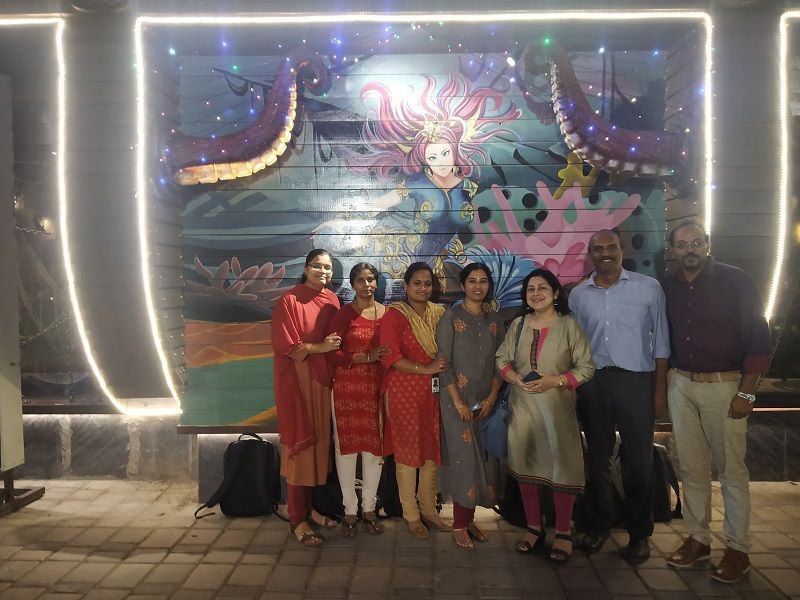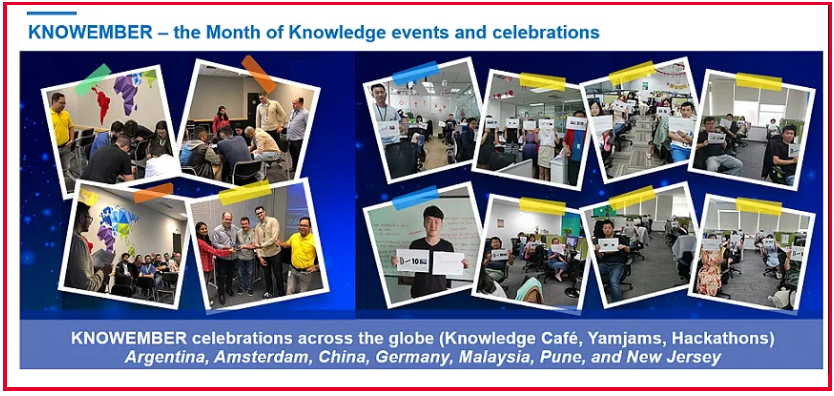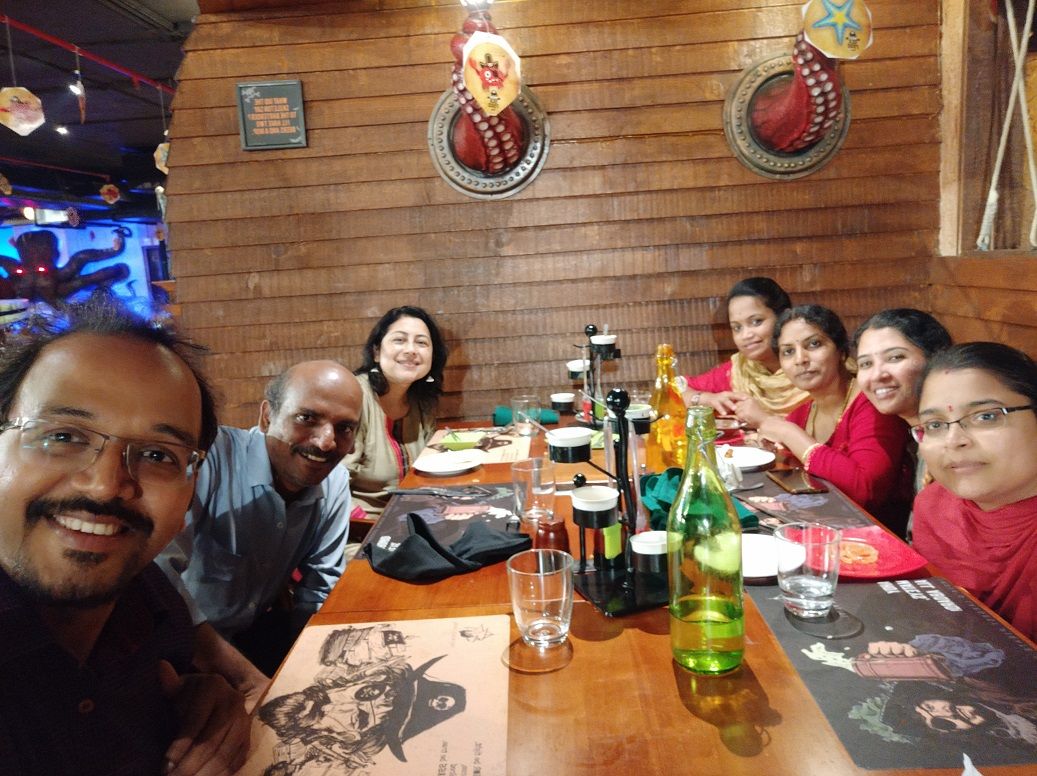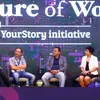International winners of the Most Innovative Knowledge Enterprise (MIKE) awards are in the spotlight at CII's Global Knowledge Virtual Summit 2020: Knowledge in the Age of Artificial Intelligence.

YourStory is the media partner for the event and moderator of the MIKE winners’ panel. See our seven-part preview article series, which includes Knowledge Leadership, KM in the Age of AI, Gamification, Knowledge Sharing in the COVID-19 Era, and Eye on AI.
MIKE 2019 winners include Afcons Infrastructure, Architectural Services Department (Hong Kong), BINUS University (Indonesia), Sinopec, Cognizant Technology Solutions, Mobarakeh Steel Company, NKE, Petroleum Development Oman, Tata Chemicals, and Wipro. The two Most Outstanding Winners of the Global MIKE Awards 2019 are EY and Infosys.
Winner scores are based on eight parameters: empowerment of knowledge workers, transformative leadership, user experience, knowledge networks, innovative culture, knowledge-based offerings, knowledge creation processes, and creative spaces.
Business leaders from 10 of these companies are in the spotlight at the CII Summit – including Hariharan Mathrubutham, Vice President for Knowledge Management and Delivery Excellence at Cognizant. He is responsible for promoting, quality, benchmarking, platforms, and metrics at the global digital services firm.
Hariharan graduated from NIT Durgapur and BITS Pilani, and has over 29 years of experience in both software and systems engineering. He has a range of certifications and training in data analytics and change management. He is active in technical committees for international standards development, and a steering committee member of SPIN Chennai.
He joins us in this exclusive interview on KM, AI, and innovation at Cognizant. He also shares tips and advice for businesses embarking on knowledge strategies.
Edited excerpts below:
YourStory (YS): What are some impacts you can share of how knowledge management (KM) has benefited your company?
Hariharan Mathrubutham (HM): Cognizant has benefited from KM at three broad levels.
Individual associates: Easy access to quality content through the enterprise KM portal has enabled continuous learning and updation of their knowledge and skills. The usage of tools and frameworks has increased their productivity.
Project and delivery teams: The biggest impact of KM in delivery is in helping projects reduce their cost of delivery through reuse of accelerators (products, solutions, tools, utilities, code snippets, components, automation). The other impact is on product and service quality through the adoption of best practices (tools, risk management, standards, golden samples) recommended by the KM system.
Sales/Commercial teams: KM has enabled sales teams to propose best-of-breed solutions to customers by providing them seamless access to the collective experience and knowledge of the organisation through the enterprise KM portal. From a bid team perspective, KM has helped reduce time and effort for creating a proposal or solution, and also improved their win ratio.

YS: The theme of this CII Summit is AI and KM. What are three ways in which you are leveraging AI along with KM?
HM: Digital, cloud, analytics, automation, and AI are key areas of focus in Cognizant, especially for KM. There are many recent examples of how we have leveraged AI for KM.
Personalisation: Our enterprise KM portal clocks one million visits and half a million downloads on an average every month. We leveraged this huge usage data and employed AI to understand the patterns of usage by our associates. A prediction model was developed, and we have now implemented this in the form of a content recommendation engine.
Based on the user persona, this engine will recommend matching content from across various knowledge databases. Associates now get quality and relevant content suitable for their needs. We refresh the AI model every month based on new usage data.
Semantic search: We leveraged AI algorithms to improve our search efficiency. One such implementation was the feature of semantic search, where the AI engine would bring similar or related words for the keyword that the user provides in the search box from the content of the documents uploaded in the KM portal. This greatly reduced the time for users to search and enhanced user experience and learning.
Risk management: One of the critical areas of focus for a project manager is risks. Being a 26+ year company, and having a huge database of risks and mitigations logged by thousands of projects, we wanted to leverage this experience to help new projects manage risks.
We used AI to develop a model, and auto-recommended risks and mitigations to a new project based on the learnings from similar projects. This has helped project managers do effective risk management planning, and helped Cognizant to achieve the goal of zero surprise escalation in projects.
YS: What kinds of internal and external communities of practice are deployed?
HM: Communities of Practice (CoPs) are established in Cognizant at three broad levels:
Internal CoPs: There are hundreds of communities within Cognizant initiated by various business units and teams to enable the exchange of knowledge and find resolutions to problems. Some teams leverage such communities to crowdsource ideas for a specific business or customer needs.
Partnership CoPs: Cognizant has strategic partnerships with close to 50 organisations like Microsoft, Amazon, and IBM. We have created forums to collaborate and exchange ideas with these partners, and Cognizant teams also participate in their internal forums. Crowdsourcing of ideas is a common practice in such communities, and hackathons are widely used to develop solutions.
Customer CoPs: We have established a ‘Cognizant Community’ for connecting with our customers. We have periodic events and exchanges designed to bring our best clients together to share their success stories, learn the latest business and technology trends, and discover the digital business applications that will change the way people live and work.

Cognizant's KM Team
YS: In which processes is knowledge embedded in the workflow, and where is extra activity needed to manage or create knowledge?
HM: Cognizant strongly believes in the concept of ‘just-in-time’ knowledge where the inputs needed for a process or task are seamlessly embedded into it. Our KM strategy is built on an auto-serve model, where the KM system proactively serves knowledge to associates or projects rather than seeking it. This shift from a ‘seek’ to ‘serve’ model is a key element of our KM strategy. This applies to both pursuit and delivery processes. Some examples are shared below.
Accelerators: Whenever a new project starts, during the initiation phase, the project manager can view all the accelerators (for example, tools, solutions, code) that the team can leverage. The manager or the team doesn’t have to go outside of the delivery platform to search and use such assets. This is made possible through an auto-recommendation engine that we have built that brings accelerators from the enterprise KM portal matching to the needs of the project.
Golden samples: During the project execution phase, for every task assigned to a resource, inputs needed for that task are embedded into the delivery platform. For example, during the requirements gathering phase, a resource working on collecting non-functional requirements (NFR) from a customer is auto-served as an NFR template contextualised to that project. This template or guideline flows from the central quality management system/process space.
Similarly, the resource is also provided what we call as ‘golden samples,’ or curated and abstracted samples of NFR documents of similar projects that can be used by the resource as a reference. This flows from the KM portal into the delivery system.
Case studies, best practices, and whitepapers: Documentation of best practices or contribution of thought leadership through whitepapers happens outside the sales and delivery platform. Associates have to download templates or samples from the enterprise KM portal, prepare their documents, and upload it to the portal. This process of knowledge contribution is currently not embedded in the pursuit of the delivery workflow.
YS: It is said that KM helps incremental improvement, but 'big leap' innovation requires different teams, processes, and culture. How are you structuring these two types of activities in your company?
HM: At Cognizant, we have dedicated teams for driving KM and Innovation, and these functions work collaboratively under the larger umbrella of delivery excellence. While the larger vision of KM is to strengthen delivery through effective reuse of knowledge, the vision of Innovation is to deliver breakthrough innovations to customers. We have entirely different processes, platforms, metrics, and cultural levers to drive KM and Innovation. However, the underlying platforms are seamlessly integrated to ensure cross-leveraging of ideas and assets by delivery teams.
For every project or engagement, specific goals are given for KM and Innovation. While the focus of KM is on the adoption of existing knowledge and best practices, the focus of Innovation is to create new ideas in business, process, and technology-based on specific customer needs. In 2019 alone, we implemented over 8,250 ideas, generating $218 million business benefit for customers. These innovations range from the creation of new tools and frameworks to processes and automation.
While the project and delivery teams focus on continuous improvement and innovations for customers, Cognizant also has a dedicated function that focusses solely on breakthrough innovations with a vision to create NexGen products and solutions for customers. This central team works with projects and business units to co-create solutions.
Various business units in Cognizant have also established Concept or Innovation Labs that completely focus on generating industry-specific breakthrough innovations. The customer experience centres that have been set up in select geographies are used to co-create innovations with customers and partners.

YS: What are some emerging trends which will affect the future of your KM strategy?
HM: We see the following as major trendsetters that will determine the way we implement KM.
AI and analytics (AI and A): While we have a dedicated practice for AI and A that provides various services to customers, we have formed a dedicated AI team for KM. For a large organisation like Cognizant with huge usage in KM, we surely see AI as a major lever to vastly improve our KM services.
Cloud: Many organisations are moving their internal applications to the cloud. From a technology perspective, cloud brings lots of new features and possibilities for effective management of knowledge. We are working with our strategic partners like Microsoft on pilots and proof of concepts to take our KM to the cloud.
Security: While content security has been a key area of focus for KM, the recent regulations on the use of employee data, especially in some geographies, have necessitated revisit of some of our KM applications. The growing importance of protecting employee-specific data and ensuring privacy will have an impact on our KM strategy.
IP and blockchain: We have recently increased our focus on the creation of Intellectual Property, and we plan to leverage the power of blockchain for effective creation and leverage of IP within the organisation.
Automation: One of the strongest levers for improving efficiency is automation. For a diverse organisation like Cognizant, offering IT consulting services across various industry verticals and geographies, automation would help KM deliver the right insights and knowledge to users and project teams contextual to their needs. We foresee greater scope for automation of several aspects of KM in the coming years.
Human-Computer Interaction (HCI) and User Experience (UX): World over, organisations are employing bots and virtual assistants to interact with humans when they visit their websites. For example, banks and insurance companies are using chatbots to help customers get their jobs done easily. At Cognizant also, we are extending our bots framework to make user interactions with the KM system richer and personal.
Online/Virtual Learning: With the emergence of lots of online content providers, we see a shift in the way we facilitate learning for our employees. Within the organisation also, we see a trend towards the delivery of learning through virtual means.

Cognizant's KM Team
YS: Based on your experience, what are your top three tips or words of advice on how business leaders should harness KM?
HM: Based on our 18+ years of experience in KM implementation for a large organisation like Cognizant, we have a range of tips for leaders.
Strategic alignment: Ensuring alignment of KM strategy to business priorities and focus is a key for the effective implementation of KM. All key aspects of KM, namely – content, platform, governance, measurement, and rewards – should be closely aligned to the business. This will ensure maximum RoI from the KM initiatives.
Core team: Success in KM can be ensured only if business units own their KM, and have a dedicated team in place with roles and responsibilities. These need not be full-time resources, but they should be accountable for the effective implementation of KM for their business unit, and they should be given KM-related KRAs as part of their annual appraisal.
Platform: Executive leadership should continuously invest in KM platforms to ensure a superior experience for employees and project teams. Continuous benchmarking of KM practices with the best in the industry and implementation of best practices should be part of the annual plan.
KM should be a responsibility for all employees and business units. As Peter Drucker has explained, every worker should be a ‘knowledge worker.’
(Edited by Suman Singh)
Want to make your startup journey smooth? YS Education brings a comprehensive Funding Course, where you also get a chance to pitch your business plan to top investors. Click here to know more.
Link : https://yourstory.com/2020/07/intelligence-cognizant-knowledge-management-ai
Author :- Madanmohan Rao ( )
July 22, 2020 at 12:33PM
YourStory


